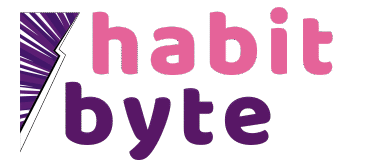Understanding How 10 Minutes of Mindfulness Meditation Improves Attention, Memory, and Cognition
What Mindfulness Meditation Is, and Why 10 Minutes Matter
Mindfulness meditation is the practice of paying deliberate, nonjudgmental attention to the present moment, often by using the breath, body sensations, or sounds as an anchor. Think of attention as a flashlight: most days it wobbles between emails, pings, and stray thoughts. Mindfulness trains you to hold the beam steady and, when it slips, to gently guide it back. That simple loop, focus, notice distraction, return, builds the mental skill that supports attention, memory, and problem-solving.
You don’t need hour-long sits to benefit. For beginners, brief daily practice (about 10 minutes) can produce measurable gains in focus and working memory within a couple of weeks. Like strength training, small, consistent reps lead to noticeable improvements in how clearly you read, how well you recall details, and how efficiently you switch between tasks.
What the Research Says (In Brief)
Controlled studies with meditation novices suggest that even short training blocks, 5 to 10 minutes per day over 1 to 2 weeks, can improve core cognitive functions:
- Improved sustained attention: steadier performance and faster responses on vigilance and executive attention tasks.
- Reduced mind-wandering: better reading comprehension and test performance when brief, structured mindfulness is added to study routines.
- Enhanced working memory and visual short-term memory: small, reliable gains in holding and manipulating information (including visual details) for a few seconds.
These effects are typically small to moderate at first, but they compound with consistency, much like interest in a savings account. Brief practice is especially helpful for novices because the skills are new and highly trainable.
What about ADHD?
Reviews and clinical trials indicate that mindfulness-based programs can lead to small-to-moderate improvements in attention, emotion regulation, and executive function for adolescents and adults with ADHD. A practical application of this research is incorporating a morning routine for ADHD kids that includes short, structured mindfulness exercises. Even 5 minutes of guided breathing, movement-based mindfulness, or a brief meditation can help set a calm, focused tone for the day. Pairing mindfulness with simple organizational habits,like visual schedules, checklists, or step-by-step routines,can further enhance attention and self-regulation, making mornings less stressful and more productive for children managing ADHD.
- Use mindfulness as an adjunct, not a replacement, for evidence-based care (e.g., medication or CBT) when recommended.
- Structured, instructor-led programs often outperform ad-hoc practice or apps, especially early on.
- Start short and concrete: 2 to 5 minutes with movement-based mindfulness can make practice approachable and sustainable for kids.
How It Works: Attention, Working Memory, and the Brain
At a brain level, attention and working memory are coordinated by fronto-parietal “control” networks. Meanwhile, the default mode network, the hub of daydreaming and self-talk, tends to surge when attention drifts. Brief mindfulness practice strengthens top-down control and dampens unhelpful internal noise, so more cognitive bandwidth is available for what matters.
A helpful analogy: imagine your working memory as a small workbench. When the default mode network floods the bench with unrelated tools and scraps, there’s no room to build. Mindfulness tidies the bench, sharpening the “gate” that decides what gets in and out, so you can hold a clear image, a name, or a plan without interference. That’s why gains often show up first in sustained attention and visual short-term memory.
A 10-Minute, Research-Inspired Practice (Plus Ways to Measure and Troubleshoot)
Try this once daily for two weeks. If you’re busy, do two 5-minute sessions (morning and mid-afternoon).
- Minute 0–1: Setup. Sit comfortably. Choose an anchor: the feeling of the breath at the nostrils or your hands resting.
- Minutes 1–7: Focus and label. Rest attention on the anchor. When distraction appears, silently label it, “thinking,” “planning,” “itch,” “sound”, and return. Each label is one repetition of the attention “rep.”
- Minutes 7–9: Visual hold. With eyes closed, picture a simple shape (triangle, square) in a single color. Hold it steadily for 10–20 seconds. If it morphs, restart. Do 3–4 rounds with different shapes.
- Minute 9–10: Open monitoring. Let go of the anchor. Notice sounds, sensations, and thoughts without chasing any of them. Maintain a relaxed, panoramic awareness.
Everyday signs it’s working:
- Email triage feels cleaner: you batch by topic and finish a thread before jumping to the next.
- Names stick better: silently visualizing the name for three breaths after an introduction boosts recall later.
- Reading is steadier: you catch mind-wandering sooner and return to the sentence edge without losing context.
Measure your progress like a scientist (once a week):
- 1-minute dot recall: View a 3×3 grid with three black dots for 2 seconds, then redraw from memory. Track accurate placements over time to monitor visual short-term memory improvements.
- Mind-wandering tally: During a 10-minute reading session, make a tick each time you notice your mind drifting. Aim for fewer ticks week to week to see attention gains.
- Task-switching timing: Alternate between two simple tasks, such as sorting coins and organizing flashcards. Track how quickly and accurately you switch without losing focus.
Conclusion: Small Steps, Noticeable Cognitive Benefits
Even brief daily mindfulness practice can lead to meaningful improvements in attention, memory, and overall cognition. Studies, including research from the University of California, Davis, and Harvard Medical School, show that just 10–20 minutes of consistent mindfulness meditation strengthens brain networks associated with executive control, working memory, and emotional regulation. The benefits are observable in everyday tasks: reading with less distraction, recalling names more easily, and approaching complex tasks with steadier focus. The key is consistency, these small, repeated mental “reps” compound over time, gradually reshaping how your brain responds to information and stress. By integrating this simple 10-minute practice into your daily routine, you’re investing in clearer thinking, sharper memory, and more efficient cognitive performance that extends well beyond your meditation session.
